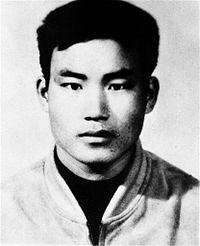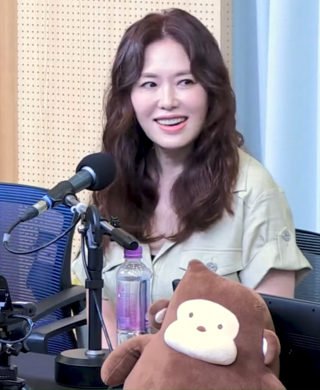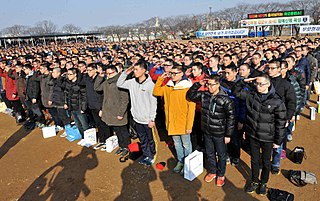The following is a list of massacres that have occurred in South Korea.
| Name | Date | Location | Deaths | Notes |
|---|---|---|---|---|
| Asan massacre | 1950 | Asan | 200+ | Committed by SK police, Korean Youth League and Taeguki Alliance. [1] |
| Autumn Uprising of 1946 | 1946, September–October | South Korea | 38 policemen, 163 civil workers, and 73 civilians | |
| Bodo League massacre | 1950, Summer | South Korea | 100,000–200,000 | Mass murder of communists and suspected communist sympathizers [2] [3] |
| Bloody Gulch massacre | 1950, August 12 | Masan | 75 | |
| Chaplain-Medic Massacre | 1950, 7 (Jul) 16 | Tunam | 31 POWs | Victims included 1 chaplain. 1 survivor of massacre |
| December Massacres | 1950, December | Seoul | thousands | Massacre of suspected communists |
| Ganghwa massacre | 1951, Jan 6-9 | Ganghwa County | 212–1300 | |
| Geochang massacre | 1951, Feb 9–11 | Geochang | 719 | |
| Jeongeup massacre | 1950, September | Jeongeup | 167 | North Korean forces murdered numerous Protestants and right-wingers. [4] [5] |
| Nonsan massacre | 1950, September 27–28 | Nonsan | 66 | North Korean soldiers executed 66 members of a Protestant Church. [4] |
| Goyang Geumjeong Cave Massacre | 1950, 10 (Oct) 9-31 | Goyang | over 153 | |
| Hangang Bridge bombing | 1950, 28 June | Hangang Bridge in Seoul | 500–1,000 | |
| Hill 303 Massacre | 1950, Aug 17 | Waegwan | 41 POWs | |
| Jeju Uprising | 1948, Apr 3 | Jeju island | 25,000–30,000 | Killed about 1/5 of the island's population |
| Mungyeong massacre | 1949 Dec 24 | Mungyeong | 86–88 | |
| Namyangju Massacre | 1950, 10 (Oct)-early 1951 | Namyangju | over 460 | |
| National Defense Corps Incident | 1950, December | 50,000–90,000 | ||
| No Gun Ri Massacre | 1950, Jul 26–29 | No Gun Ri | 163–400 | US Army 7th U.S. Cav. |
| Sancheong-Hamyang massacre | 1951, Feb 7 | Sancheong and Hamyang | 705 | Perpetrators-South Korean Army |
| Seoul National University Hospital massacre | 1950, 28 June | Seoul | 700-900 | Perpetrators-North Korean People's Army |
| Yeosu-Suncheon Rebellion | 1948, October - October However pockets of resistance lasted through to 1957, almost 10 years later. | Yeosu, Suncheon | 2,976-3,392 | |
| Hongcheon shooting | 1958, January 23 | Hongcheon, Gangwon | 7 (Including the perpetrator) | A army captain Cho Sang Kook kills six people in Hongcheon during the night of January 23, 1958. [6] [7] [8] [9] [10] [11] |
| Bloody Tuesday | 1960, April 19 | Seoul | 186 | |
| Blue House raid | 1968, January 17 - 29 | Blue House, Seoul | 59 | Failed assassination attempt of Park Chung Hee by Unit 124 |
| Wonju shooting | 1969, June 5 | Wonju, Gangwon Province | 6 (Including the perpetrator) | 5-6 Wounded [12] [13] [14] [15] [16] [17] |
| Kimpo killings | 1971, January 18 | Kimpo | 7 (Including the perpetrator) | Killing spree by South Korean marine |
| Unit 684 mutiny | 1971, August 23 | Silmido and Seoul | 38 | |
| 1974 Kimpo killings | 1974, May 1 | Kimpo | 11 (Including the perpetrator) | [18] [19] [20] [21] [22] |
| Assassination of Park Chung Hee | 1979, October 26 | Blue House, Seoul | 6 | The incident is often referred to as "10.26" or the "10.26 incident" |
| Gwangju Democratization Movement | 1980, May 18–27 | Kwangju | over 165 | Civil/Political |
| Uiryeong massacre | 1982, April 26–27 | Uiryeong County | 62 (plus 1 perp.) | Shooting spree by a former marine |
| Cho Jun-hui Incident | 1984, June 26 | Goseong County, Gangwon | 15+ | Perpetrator attacked his military camp, then fled across the border after the massacre [23] |
| Gimpo International Airport bombing | 1986, September 14 | Gangseo District, Seoul | 5 | Bombing of airport by North Korea |
| Odaeyang mass suicide | 1987, August 28 | Yongin, Gyeonggi Province | 32 | Mass suicide |
| Frog Boys case | 1991, March 26 | Daegu | 5 | Unsolved homicide of 5 boys |
| Daegu Nightclub Arson | 1991, October 17 | Daegu | 16 | Attack on a nightclub, 13 Wounded [24] [25] |
| Daegu subway fire | 2003, February 18 | Jungangno station, Daegu | 192 | Deadliest mass murder committed by a single perpetrator |
| 2005 Yeoncheon shooting | 2005, June 19 | Yeoncheon County | 8 | private Kim Dong-min threw a grenade with a pin released at the interior office and fired a gun, killing eight people and injuring two others, known to the Korean public as the "Kim Il-byeong Incident." [26] [27] [28] [29] |
| Nonhyeon-dong massacre | 2008, October 20 | Nonhyeon, Seoul | 6 | Arson and stabbing attack |
| Ganghwa Island shooting | 2011, July 4 | Ganghwa County | 4 | |
| Goseong killing spree | 2014, June 21 | Goseong County, Gangwon Province | 5 | Rampage by a South Korean soldier |
| Sejong and Hwaseong shootings | 2015, 25–27 February | Sejong, Hoseo and Hwaseong, Gyeonggi | 8 (including both perpetrators) | Two separate mass murder-suicides two days apart |
| Gunsan Bar arson attack | 2018 June | Gunsan, North Jeolla Province | 5 | 28 injured [30] |
| Daegu office fire | 2022, June 9 | Daegu | 7 (including the suspect) | 49 Wounded |






